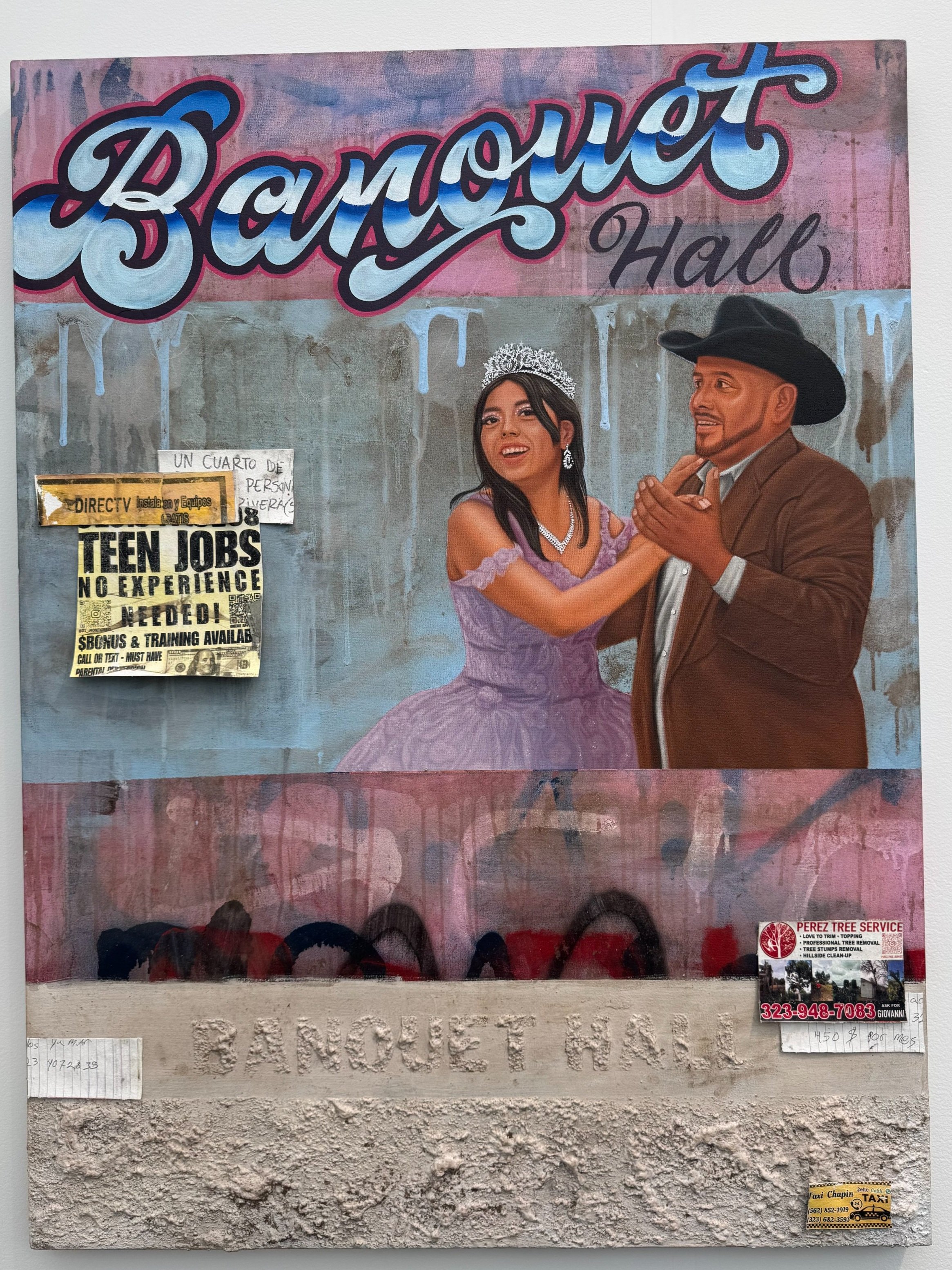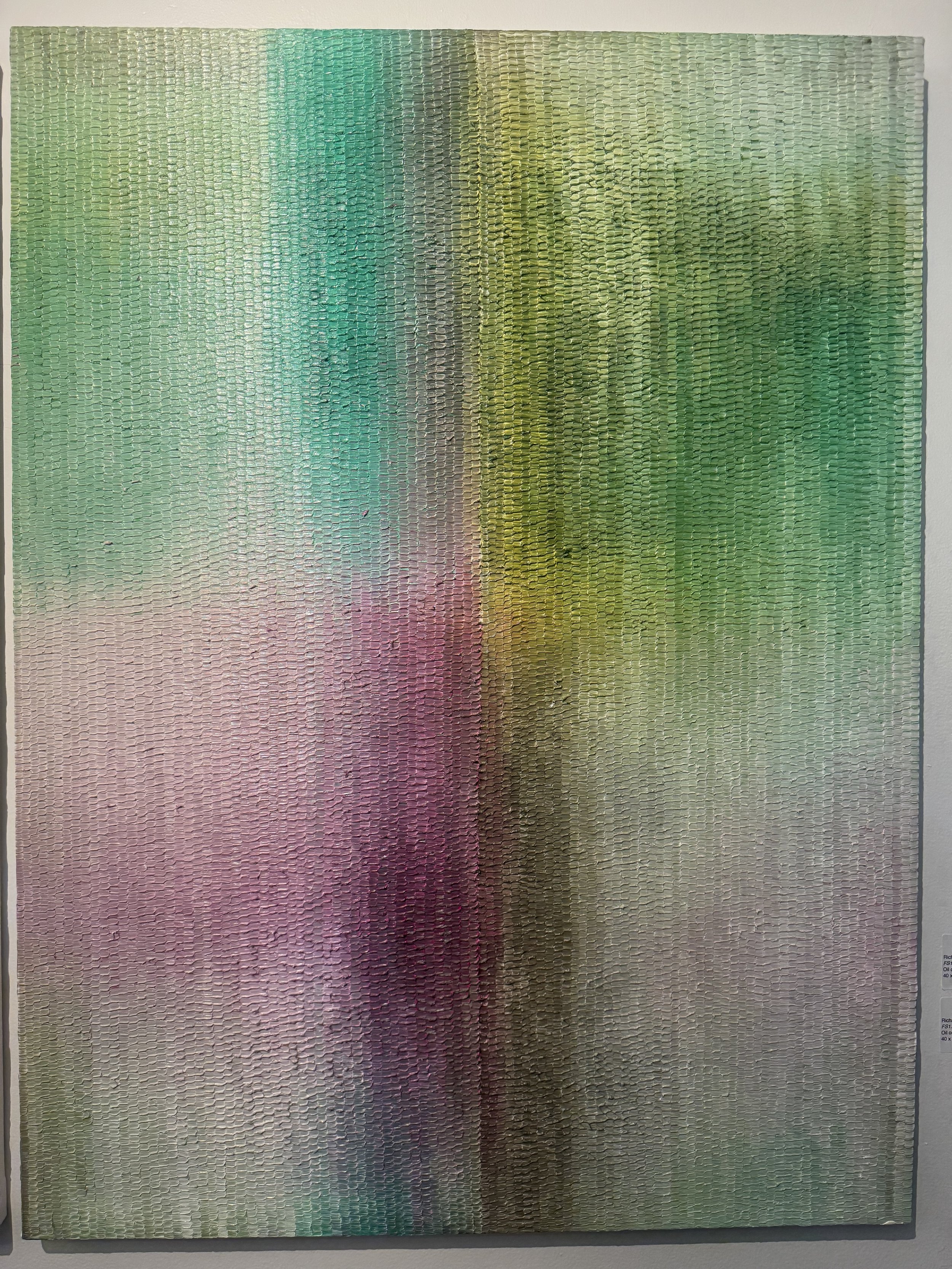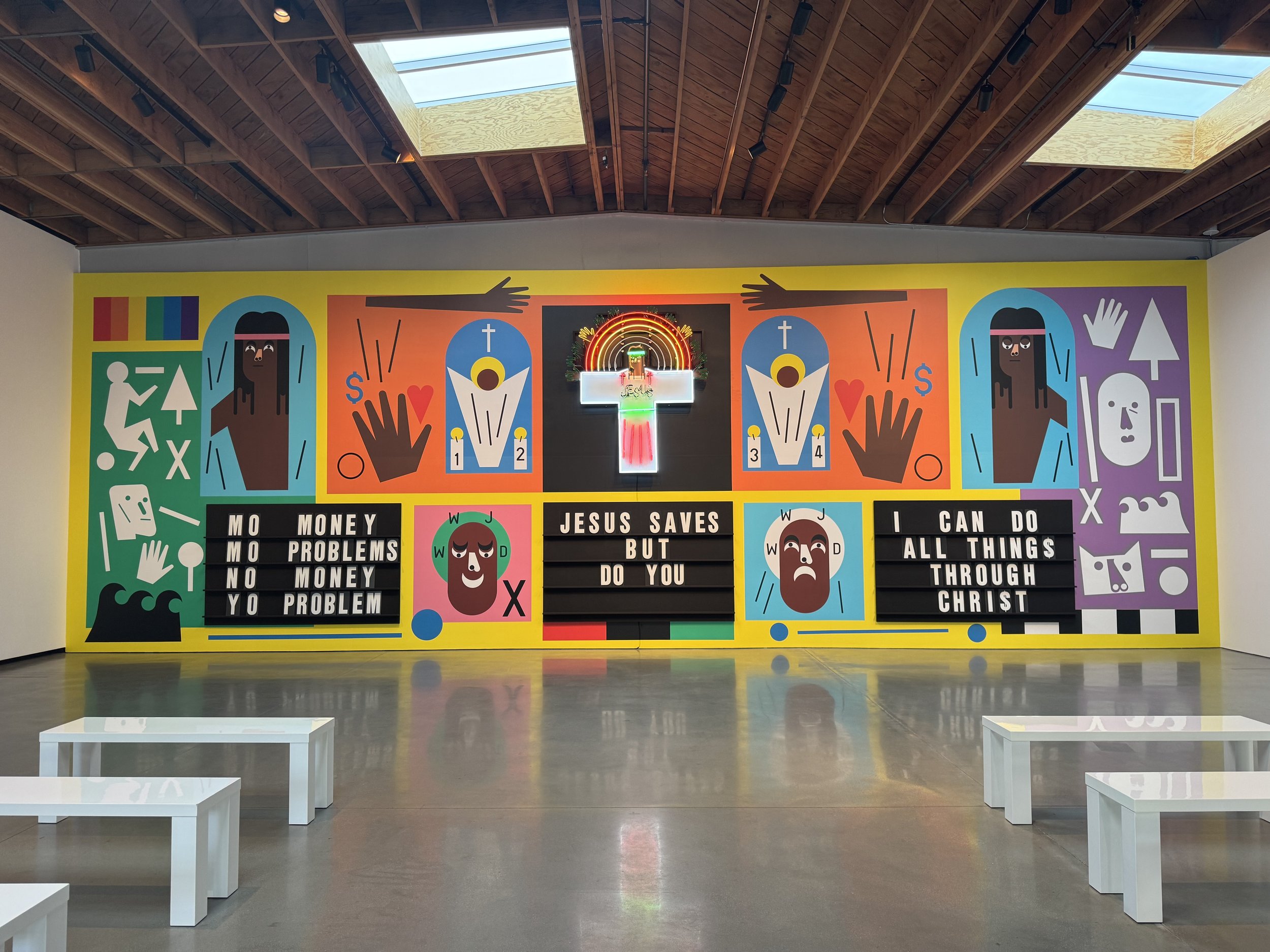A Cultural Juggernaut Celebrates Art and Itself
Charting Transcendence interprets art and guides you deeper into yourself and the creation of consciousness.
Yet fluency in this line of work requires a broad and nuanced understanding of the world and its often-complex contexts.
Otherwise, you might miss something, like thousands of other people at Frieze LA who probably overlooked this:
Sunset view of Jackie Amézquita’s (b. 1985) trazos de energía entre trayectorias fugaces (2025) curated by Art Production Fund and installed on the soccer field at Airport Park, Santa Monica, just steps from the entrance to Frieze Los Angeles.
What is the meaning behind this open-air installation whose title translates to strokes of energy between impermanent traces by a highly trained, Los Angeles based Guatemalan-born artist?
Why did she build a mini-Mayan temple out of a panoply of lava rocks, fossil shell powder, biochar, copper, masa (corn dough), maize, limestone, grass, soil, ocean water, agave fibers mats and other biomaterials… and for whom?
Why did she lay it out upon the demotic geometry of an artificial turf soccer field outside a luxury art fair’s custom-built tent hosting hundreds of millions of dollars of art?
What is the significance of the Los Angeles art community’s decision to proceed to host Frieze and Art Week just weeks after the costliest natural disaster in American history?
Is it just a coincidence that, just a few miles away, a recently opened exhibition (more than two years in the making) featured both the art of Native Californian artists and traditional fire management practices, which were discouraged and ultimately suppressed by those who displaced them?
This WWII-era propaganda poster vilifying the setting of small fires on the West Coast (even though native Californians had abated the risk of larger ones for millennia through controlled burns) is an illuminating historical document in Fire Kinship: Southern California Native Ecology and Art at UCLA’s Fowler Museum.
Isn’t it interesting that the thrust of this exhibition is that Native Californians long practiced controlled burns and careful land management to ward off the risk of major fires?
What kind of ecological issues does California face now in a changing climate, after centuries of colonization, industrialization, and wholesale commercialization of its landscape?
Can native peoples, their art and experience, offer any helpful suggestions for how we might reimagine a better future for LA, California, and America on an ever more fragile planet?
And lastly, what does it mean when an artist creates such a large work entitled strokes of energy between impermanent traces that most would overlook were it not for additional context?
To me, the answers to these questions become clear when I immerse myself in the Los Angeles art scene.
This is the value that an art advisor brings to exploring and understanding art within the context of its creation.
For those who missed out, Charting Transcendence is planning more tours for NYC, Florida, Chicago, Dallas, Houston, Minneapolis, as well as again in California throughout 2025.
Some snapshots from a week of exploring art around LA:
Below: views of downtown LA as well as the city’s iconic new Sixth Street Viaduct over the Los Angeles River.
Above: the sidewalk outside Hauser & Wirth, one of the city’s best galleries, and an escalator leading up to galleries of the encyclopedic Los Angeles County Museum of Art (LACMA).
No Contemporary Artist is More Quintessentially “LA” than Alex Israel
Alex Israel’s large paintings of Chateau Marmont and Pann’s Restaurant, featuring two vintage iconic styles of LA architecture, Châteauesque and Googie, on display in the gallery show Noir at Gagosian Beverly Hills.
I must admit, I’m a bit ashamed to say that I’m a kind of jealous of Alex Israel (b. 1982).
He’s an artist whose work I sort of hate, yet kind of love, and for that it will be bound to fascinate me for ages.
Alex’s art is more “LA” than LA is, as it conjures the iconography of Hollywood, the cult of celebrity, and the city’s unique aesthetic of glamour and artificiality.
His use of bold, saturated colors, sleek finishes, and recurring motifs like self-portraits, sunglasses, and palm trees creates a signature style that is instantly recognizable and deeply evocative of LA’s visual smorgasbord of celebrity and culture.
Alex is also a rarer breed of artist who inserts himself into the very fabric of the culture he critiques, much like Andy Warhol did in his day, blurring the line between creator and subject, while offering meta-commentary on obsession with personality and branding.
Popular and iconic locations on the Westside, including The Bigg Chill (owned by Alex Israel’s family) depicted in the artist’s show of new paintings at Gagosian Beverly Hills, embody and reflect the magical, cinematic lure of Los Angeles.
Imbued with Hollywood magic, Noir, at Gagosian Beverly Hills exhibits large-scale, crepuscular cityscapes of both glamourous and mundane haunts in Tinseltown, recognizably poignant to those who know and love the city, its facets and quirks.
These luscious new paintings hover in a space between GCI film and classical photorealism (featured right now in LA MoCA’s Ordinary People: Photorealism and the Work of Art since 1968.) Depopulated and eerie, they hearken back to dramatic moments pulled from the Hollywood genre for which the show is named.
Over a week after seeing them, some curious thoughts are still coming up for me: why am I so fascinated with these paintings? What do they mean? I didn’t think I cared much for Hollywood noir, and why am I thinking so deeply about Alex’s work?
My take is that his first show in town in nearly a decade is a “must-see” for locals. As far as art goes — it’s more “LA” than LA is.
Alex Israel may be best known for his shamelessly self-promoting series of iconic self-portraits (above), identical in shape but painted-in differently. The one on the left is in the collection of the Bass Museum of Art, Miami Beach, and on the right sold at Sotheby’s New York in November 2024 for $144,000 (others have sold for as much as $320,000).
Highlights from Frieze, Other Fairs & Los Angeles Museums
In addition to Frieze — which hands-down was the best fair in town — Charting Transcendence toured the Felix Art Fair, held at the historic Hollywood Roosevelt Hotel, which maintains a chic and intimate poolside vibe, even as it hosted fewer galleries (with arguably less compelling art) than last year.
Upstart Future Fair hosted an exclusive, invitation-only exhibit at a private residence in Brentwood, and Post-Fair, which debuted in Santa Monica as a new platform for emerging artists and experimental projects.
The LA Art Show at the Los Angeles Convention Center was pretty commercial and run-of-the-mill (i.e. lousy in comparison to the other fairs.)
Experiencing art in Los Angeles with Charting Transcendence is to understand Southern California’s metropolis as a cultural dynamo, generating and exporting entertainment and concepts that engender a worldwide fascination with American culture.
Max Hetzler Gallery sold two large canvases of flowers for $40,000 each by Grace Weaver (b. 1989). She named them after two movements of Czech composer Antonin Dvorak’s American Quartet, composed in Spillville, Iowa in 1893, that she was listening to while painting them in Europe. Grace’s technique is highly recognizable, a promising trait for a young painter.
Channeling contemporary popular Chicano and Latinx culture, Alfonso Gonzales Jr. (b. 1989) showed Quinceanera Banquet Hall (2024) with kingmaker dealer Jeffrey Deitch at Freize. Its use of trompe l’oeil and elevation of street art to fine art is a clever critique.
James Cohan Gallery put on a stellar show of geometrically abstract paintings, by Eamon Ore-Giron (b. 1973). They are inspired by indigenous mythologies. This one is called Talking Shit with the Decapitator Owl/Nocturnal Spirit (Iteration I) (2025).
Frieze Los Angeles was fairly sparse on photography this year, although a notable standout was Southern Guild’s presentation of work by Zanele Muholi (b. 1972), whose queer self portraits are iconic and highly sought after by collectors.
Sara Issakharian’s paintings, shown by Tanya Leighton, of maelstroms of energy bridging figuration and abstraction were a highlight of Santa Monica’s new Post-Fair.
NYC-based Colleen Herman (b. 1982) showed captivating new abstract expressive painting at Sarah Brook Gallery on Hollywood Blvd.
Patricia Sweetow Gallery is showing intricate abstract textile-based works by John Paul Morabito that weave together themes of identity, desire, and the ephemeral nature of nightlife in queer spaces.
Fine, chromatic brushstrokes of wet-upon-wet paint distinguish the work of artist Richard Tinkler (b. 1975), whose paintings were shown by 56 Henry Gallery at Felix Art Fair. Both artist and gallery pack an outsize punch of value and quality in their offerings.
Albertz Benda’s suite in the tower of the Hollywood Roosevelt Hotel for Felix Art Fair showed this trypophobia-inducing vase by veteran Long Beach, California ceramicist Tony Marsh (b. 1954).
Celebrating popular Chicano culture and the visual language of the street at Frieze were these sign-painted works on metal gates by the talented LA artist Ozzie Juarez (b. 1991) who shows with Chinatown’s Charlie James Gallery.
Jeffrey Deitch currently has a show of the best work I’ve ever seen by African American artist Nina Chanel Abney (b. 1982), who playfully depicts members of her community, often with satirical humor.

























